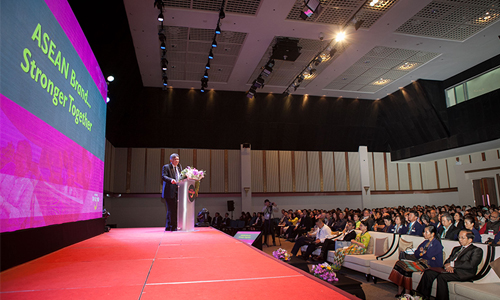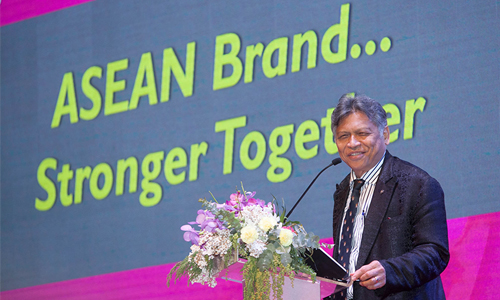Chiang Mai, 8 June, 2016 – Former Secretary General of the Association of Southeast Asian Nations Dr. Surin Pitsuwan called on the ASEAN tourism industry to pay equal attention to the socio-cultural pillar of ASEAN integration, and not just over-focus on its economic impact.
Dr. Surin delivered the keynote speech on the subject of “ASEAN Brand – Stronger Together” at the Thailand Travel Mart Plus Amazing Gateway to the Greater Mekong Subregion 2016 (TTM+ 2016), which opened today at the Chiang Mai International Exhibition and Convention Centre (CMECC).
He noted that ASEAN’s 10 member countries were a “tapestry of contrasts” comprising the largest Muslim country (Indonesia), the largest Catholic country (the Philippines) and the four contiguous Buddhist countries (Thailand, Myanmar, Lao PDR. and Cambodia).
Because it is this diversity which makes ASEAN such an attractive destination, he said the regional travel and tourism industry should pay equal attention to the socio-cultural and political-security blueprints of ASEAN, “not just economic, economic, economic all the time.”
Although economic issues dominate the trade and investment agendas, Dr. Surin said most people forget that ASEAN integration comprises of three pillars.
The fundamental foundation of ASEAN integrated community is the socio-cultural blueprint, “where people matter, where the exchange of people, the appreciation of both differences and commonalities are important, where we identify ourselves not just by our nationality but also as members of ASEAN as a ‘second identity’.”

He noted that intra-ASEAN commerce is only about 27-28% of the total trade volume while intra-ASEAN travel is about 47-48% of the total. As 2017 will mark the 50th anniversary of ASEAN, and a campaign will be launched to mark the event, it should be possible for intra-ASEAN travel to hit the 50% mark. “That’s within striking distance,” he said.
Dr. Surin stressed that thanks to low-cost airlines, transportation was no longer an issue in ASEAN connectivity. The challenges are now managing the growth — how to improve the services and enhance sustainability.
“If we are not careful, we will have problems of congestion and environmental impact, which will also impact the cultural resources that we value. It’s the software not the hardware. It’s the management, not the transportation systems anymore.”
“Tourism is supposed to be one activity that creates opportunity for everyone. Let us make the ASEAN destination attractive, sustainable, accessible and playing the role of equalising that income.
“Tourism is a goose laying golden eggs. We can’t starve it, nor can we over-feed, nor ignore it, nor take too much advantage of it.”
He also noted that ASEAN is branding itself as a single destination, an integrated market. This will become much easier if the ASEAN countries can come up with a single visa to allow people to move more seamlessly through the region.
He called on the tourism industry to put pressure on the immigration and safety authorities to expedite a single visa.
Finally, he called on the industry to not just focus on doing business, but also get involved in the broader goals of creating a better world for future generations.
While tourists had the luxury of being on the move for leisure and pleasure, he urged the audience to think of the humanitarian suffering of the millions of people who are on the move to escape suffering and violence.
Dr. Surin also reminded the industry that there would be 12 billion people on the planet over the few decades. What kind of new issues and challenges would that entail, he asked.






